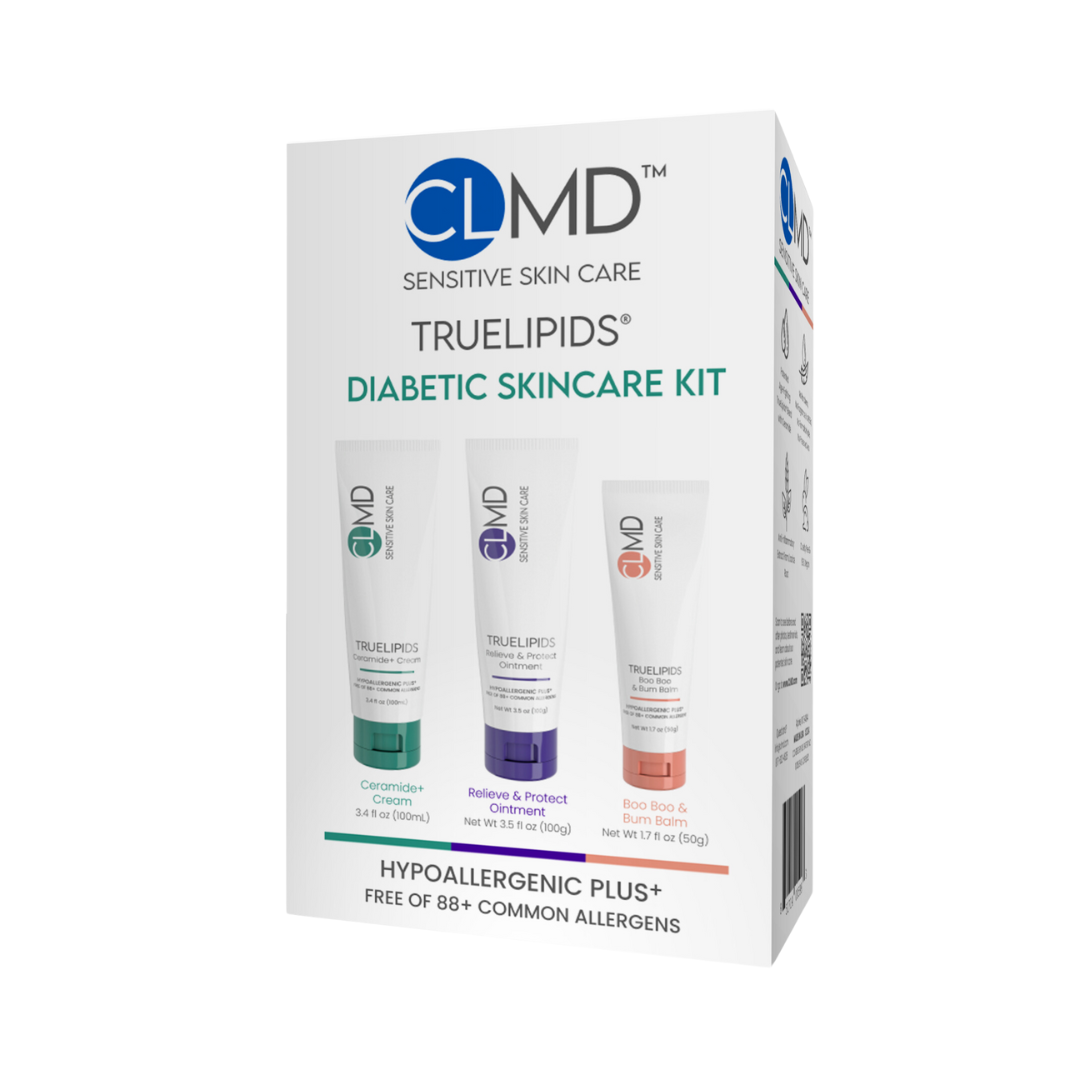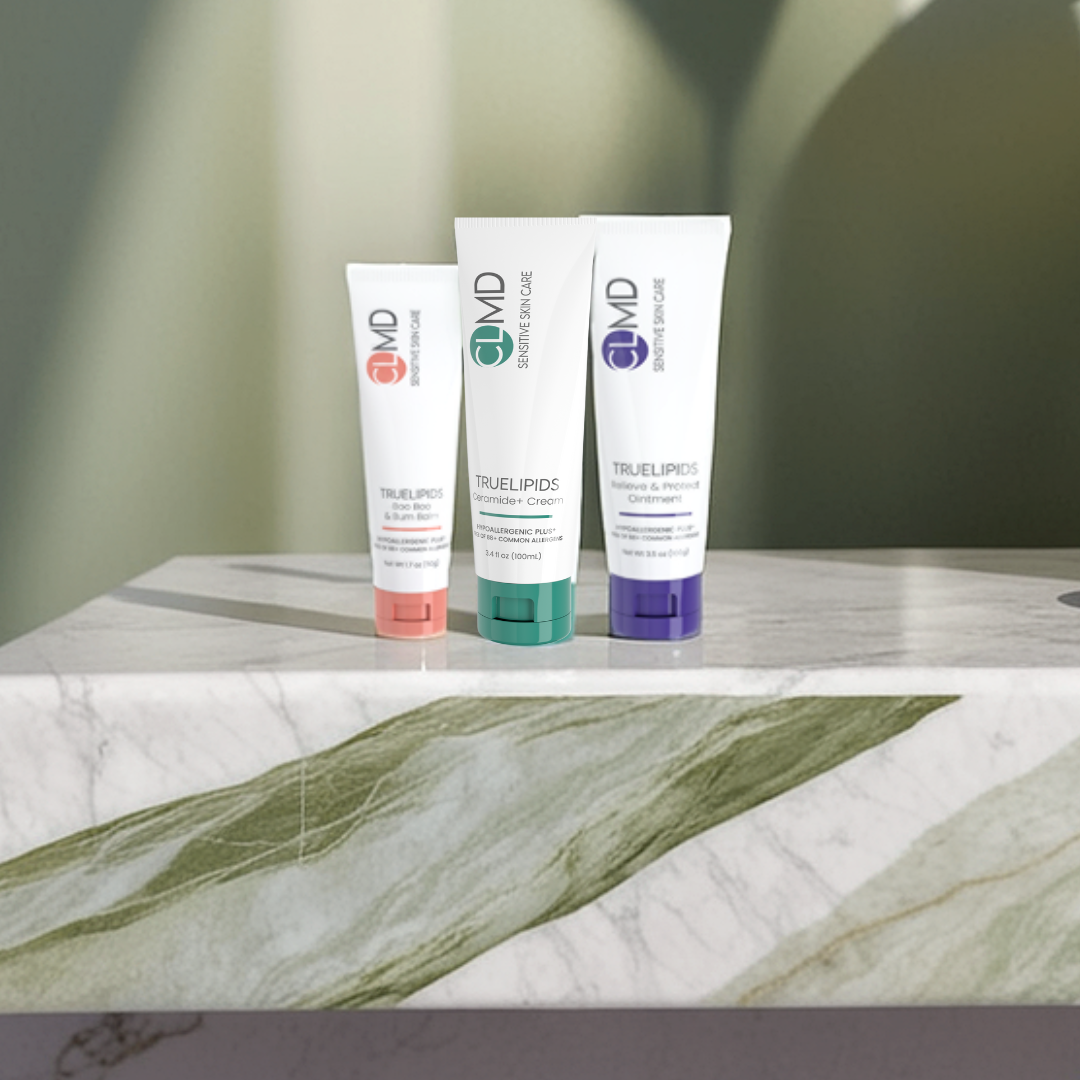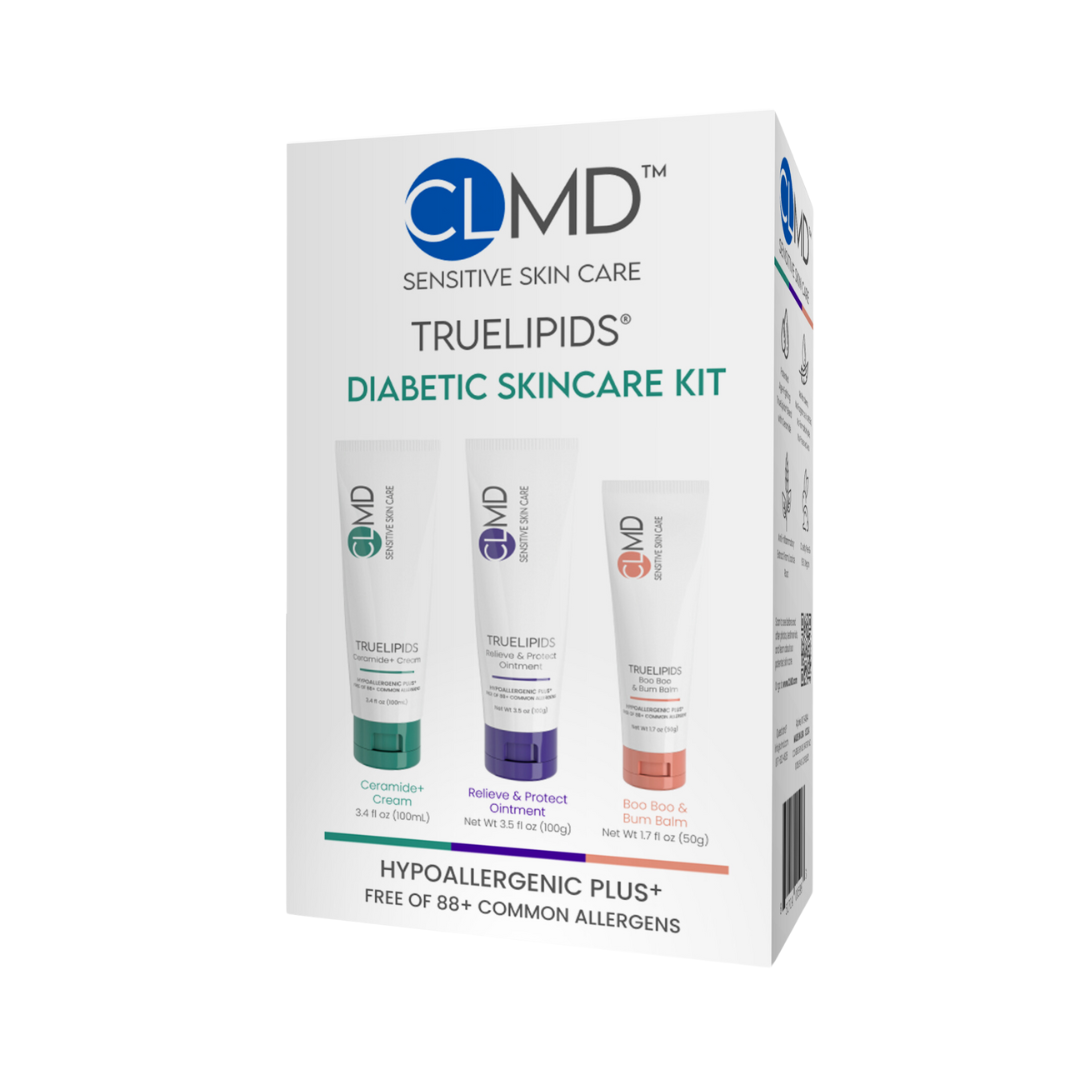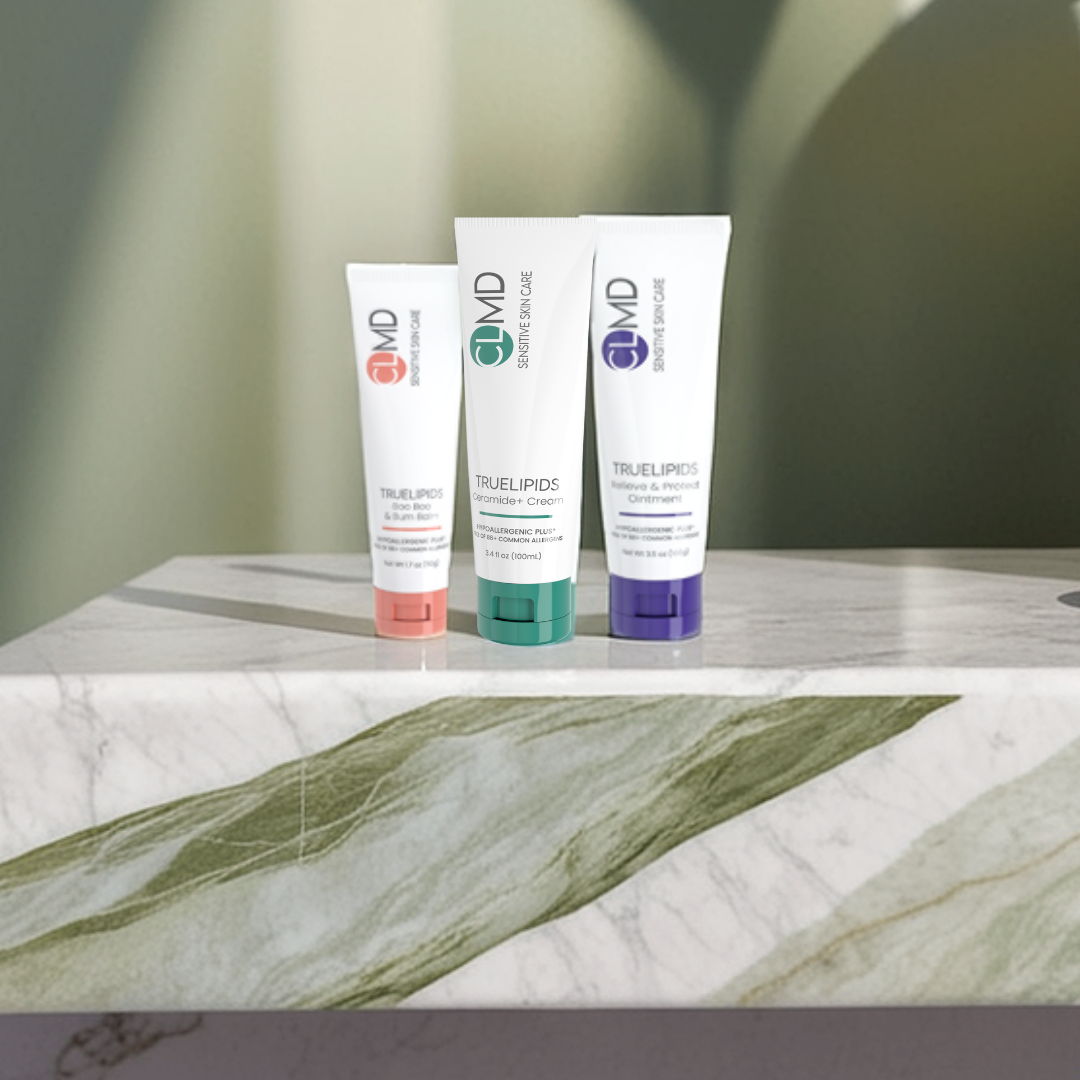Diabetic Skincare Kit
- Regular price
-
$ 123.75 - Regular price
-
- Sale price
-
$ 123.75
Maximum Relief for Diabetic Skin Vulnerabilities
The TrueLipids Diabetic Skincare Kit was designed with diabetic skin in mind to address the unique challenges that come with managing diabetes and skin health. Diabetic skin is particularly vulnerable to oxidative damage from excess glucose, environmental stressors, and sun exposure. Additionally, skin barrier breakage from excessive glycation is one of the most concerning side effects of diabetes. This kit offers fast, effective relief by restoring hydration, protecting the skin’s barrier, and helping to manage the vulnerabilities diabetic skin faces daily.
Created by dermatologist Dr. Cheryl Lee Eberting, this kit features a combination of products specifically formulated to care for diabetic skin, providing maximum protection and comfort.
The kit includes:
- TrueLipids Double Action Boo-Boo & Bum Balm
- TrueLipids Relieve & Protect Ointment
- TrueLipids Ceramide+ Cream
Couldn't load pickup availability
How it Works
The Diabetic Skincare Kit is designed to provide targeted relief for skin affected by the vulnerabilities that come with diabetes. Each product in the kit works to replenish hydration, repair the skin’s moisture barrier, and protect it from external irritants and oxidative stress.
Double Action Boo-Boo & Bum Balm: This balm provides dual-action protection by both soothing and repairing diabetic skin. It works to protect and heal areas prone to irritation, chafing, or sores, commonly seen in individuals with diabetes. The balm’s rich emollient formula locks in moisture and shields the skin from further damage, while its soothing ingredients help reduce redness and inflammation.
Relieve & Protect Ointment: This ointment is designed to create a protective layer over the skin, sealing in moisture and shielding the skin from environmental stressors like pollutants and UV rays. It’s ideal for addressing skin dryness, cracks, and irritation caused by diabetic skin’s compromised barrier. The ointment helps to restore hydration and soothe sensitive skin, making it perfect for use on both the face and body.
Ceramide+ Cream: This advanced ceramide formula helps restore and strengthen the skin’s natural moisture barrier, which is often weakened in individuals with diabetes. By replenishing ceramides, it improves the skin’s ability to retain moisture and protects against oxidative damage, which can accelerate the aging process of diabetic skin. This cream also works to smooth dry, rough patches and maintain the skin’s elasticity.
How to Use
Step 1:
Apply TrueLipids Double Action Boo-Boo & Bum Balm to areas prone to irritation, chafing, or sores. Use liberally on sensitive or dry patches, especially in high-friction areas such as elbows, knees, and the lower back. Reapply as needed throughout the day to keep skin protected and hydrated.
Step 2:
Follow up with TrueLipids Relieve & Protect Ointment. Apply generously to areas of the body that are particularly dry, cracked, or prone to environmental irritation. This ointment provides a protective layer that locks in moisture and shields the skin from external irritants, helping it heal faster and preventing further damage.
Step 3:
Finish with TrueLipids Ceramide+ Cream. Apply the cream to your face and body to restore and protect the skin’s moisture barrier. This nourishing cream helps keep the skin hydrated, smooth, and resilient while promoting overall skin health.
Why It Works
The Diabetic Skincare Kit combines three powerful products to address the unique needs of diabetic skin. Diabetic skin is often more susceptible to dryness, irritation, and damage due to a weakened barrier function and oxidative stress. This kit provides comprehensive care by replenishing moisture, protecting against environmental damage, and repairing the skin’s natural protective layers.
The Double Action Boo-Boo & Bum Balm targets vulnerable areas prone to irritation, helping to protect and heal the skin. Its rich, soothing formula helps minimize redness and inflammation, providing relief to sensitive skin.
The Relieve & Protect Ointment helps to seal in moisture, lock out irritants, and promote healing for dry, cracked skin. This ointment is essential for managing common skin issues caused by diabetes, such as rough patches and dryness.
The Ceramide+ Cream is designed to restore the skin’s lipid barrier, which is often compromised in people with diabetes. By strengthening the barrier and preventing moisture loss, it ensures that the skin stays hydrated, protected, and smooth. This cream also helps to prevent oxidative damage, which can cause premature aging of diabetic skin.
Together, these products help to manage the unique vulnerabilities of diabetic skin, offering long-lasting relief, hydration, and protection. With regular use, you’ll experience smoother, healthier, and more resilient skin.



Diabetic Skincare Kit
- Regular price
-
$ 123.75 - Regular price
-
- Sale price
-
$ 123.75



